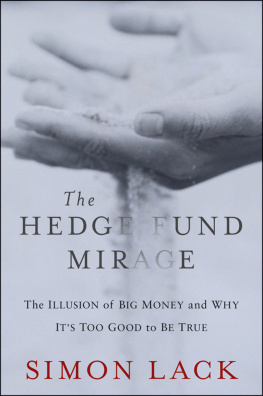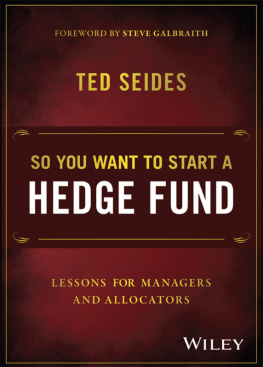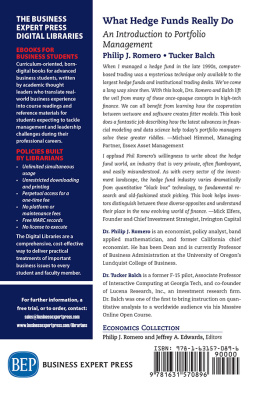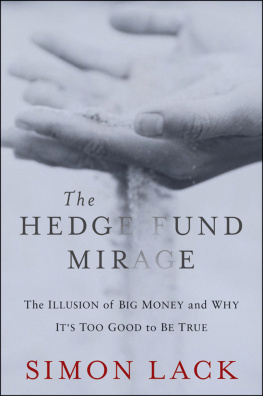Contents

Copyright 2012 by Maneet Ahuja. All rights reserved.
Published by John Wiley & Sons, Inc., Hoboken, New Jersey.
Published simultaneously in Canada.
No part of this publication may be reproduced, stored in a retrieval system, or transmitted in any form or by any means, electronic, mechanical, photocopying, recording, scanning, or otherwise, except as permitted under Section 107 or 108 of the 1976 United States Copyright Act, without either the prior written permission of the Publisher, or authorization through payment of the appropriate per-copy fee to the Copyright Clearance Center, Inc., 222 Rosewood Drive, Danvers, MA 01923, (978) 750-8400, fax (978) 646-8600, or on the Web at www.copyright.com . Requests to the Publisher for permission should be addressed to the Permissions Department, John Wiley & Sons, Inc., 111 River Street, Hoboken, NJ 07030, (201) 748-6011, fax (201) 748-6008, or online at www.wiley.com/go/permissions .
Limit of Liability/Disclaimer of Warranty: While the publisher and author have used their best efforts in preparing this book, they make no representations or warranties with respect to the accuracy or completeness of the contents of this book and specifically disclaim any implied warranties of merchantability or fitness for a particular purpose. No warranty may be created or extended by sales representatives or written sales materials. The advice and strategies contained herein may not be suitable for your situation. You should consult with a professional where appropriate. Neither the publisher nor author shall be liable for any loss of profit or any other commercial damages, including but not limited to special, incidental, consequential, or other damages.
For general information on our other products and services or for technical support, please contact our Customer Care Department within the United States at (800) 762-2974, outside the United States at (317) 572-3993 or fax (317) 572-4002.
Wiley also publishes its books in a variety of electronic formats. Some content that appears in print may not be available in electronic books. For more information about Wiley products, visit our web site at www.wiley.com .
Library of Congress Cataloging-in-Publication Data:
Ahuja, Maneet, 1984-
The alpha masters : unlocking the genius of the worlds top hedge funds / Maneet Ahuja.
p. cm.
Includes index.
ISBN 978-1-118-06552-5 (cloth); ISBN 978-1-118-16759-5 (ebk); ISBN 978-1-118-16758-8 (ebk); ISBN 978-1-118-16757-1 (ebk)
1. Hedge funds. 2. Investment advisors. I. Title.
HG4530.A389 2012
332.64524dc23
2012010363
To God The Ultimate Alpha Master
Long ago, Sir Isaac Newton gave us three laws of motion, which were the work of genius. But Sir Isaacs talents didnt extend to investing: He lost a bundle in the South Sea Bubble, explaining later, I can calculate the movement of the stars, but not the madness of men. If he had not been traumatized by this loss, Sir Isaac might well have gone on to discover the Fourth Law of Motion: For investors as a whole, returns decrease as motion increases.
Warren Buffett
Foreword
The Less Mysterious World of Hedge Funds
Mohamed A. El-Erian
CEO and Co-CIO of PIMCO
The mystique of hedge funds is undeniable.
In the investment management world, hedge funds are often referred to as smart money. They command premium fees and are thought to attract the best and brightest talent. Beyond this world, they are known for having minted several billionaires and hundreds, if not thousands, of millionaires. And they are an increasingly attractive topic for writers of both fiction and nonfiction.
As much as they are admired, hedge fund managers are also feared and, in some quarters, even loathed. Some see them as investment cowboys who, in ruthless pursuit of profits, pose significant risks to the stability of the global financial systems. No wonder hedge funds have attracted the attention of regulators and, in cases of countries in severe crises (be it Asia in the late 1990s or Europe today) that of politicians pointing an accusatory finger claiming that they are sources of disruptive evil and illicit earnings at the expense of entire nations.
Whether you like them or hate them, there is little denying that the hedge fund industry is here today because of their early well-earned reputation of savvy, agility, and investment coups. In recent years, however, the standing of hedge funds has come under pressure as their numbers have mushroomed, average investment returns have generally disappointed, and the investment landscape has become more complex and harder to navigate. It also has not helped that some investors unexpectedly found themselves locked in their hedge fund investments, unable to cash out at a time of severe liquidity pressures.
Nowadays, the popular narrative on hedge funds often oscillates between two extremes, and do so repeatedly: characterizing them as highly adaptable and responsive pools of money that help markets become more efficient and, in the process, generate supernormal returns for their clients in a manner that is consistent with the common good; to viewing them as grossly overpaid investment vehicles that consistently promise more than they can deliver while trying to harvest private gains at the cost of the general public through some practices that can sometimes be considered morally, ethically, and legally questionable.
The associated debates can often get very heated and, in the process, lose sight of two simple yet crucial realities. As complex as it may seem to many, the hedge fund industry essentially boils down to two deterministic factors: the type of investment vehicles and the investment managers that have self-selected to run them.
Investment Vehicles
The first of these two elements is getting quite well understood. While they may vary in their sector focus and styles, hedge funds share four common and interrelated characteristics:
- First, they target positive absolute returns rather than simply outperforming a certain market benchmark or a specific stylethus the common claim that hedge funds like to make that they can deliver strong returns regardless of how global stock markets, commodities, currencies, or bonds do.
- Second, they have access to a very wide range of investment tools and instruments. Most important, they can go long or short a market, sector, or company. This leads to the common hedge fund claim that they can change their overall positioning quickly and cost effectively, thus hedging their investors capital from the vagaries of markets.
- Third, they can lever their investment footing to a meaningful multiple of their assets under management. This elasticity underpins hedge fund claims of being incredibly flexible when it comes to scaling the investment bet commensurate with the depth of their conviction.
- Finally, they almost always follow a fee structure involving a base component and a performance component, traditionally known as 2 and 20 (a 2 percent fee that investors pay irrespective of performance and 20 percent of the profits above a specified thresholdthough these days many hedge funds find themselves under tremendous pressure to lower their fees).
Investment Managers
The second element is less well known. And this is where Maneet Ahujas book comes in forcefully and effectively.
This interesting book takes you on a journey through the fascinating and still-mysterious world of successful hedge fund managers. You will make many interesting, and in some cases surprising stops along the way, getting to know managers, their philosophies, styles, quirks, and working practices.
Next page











